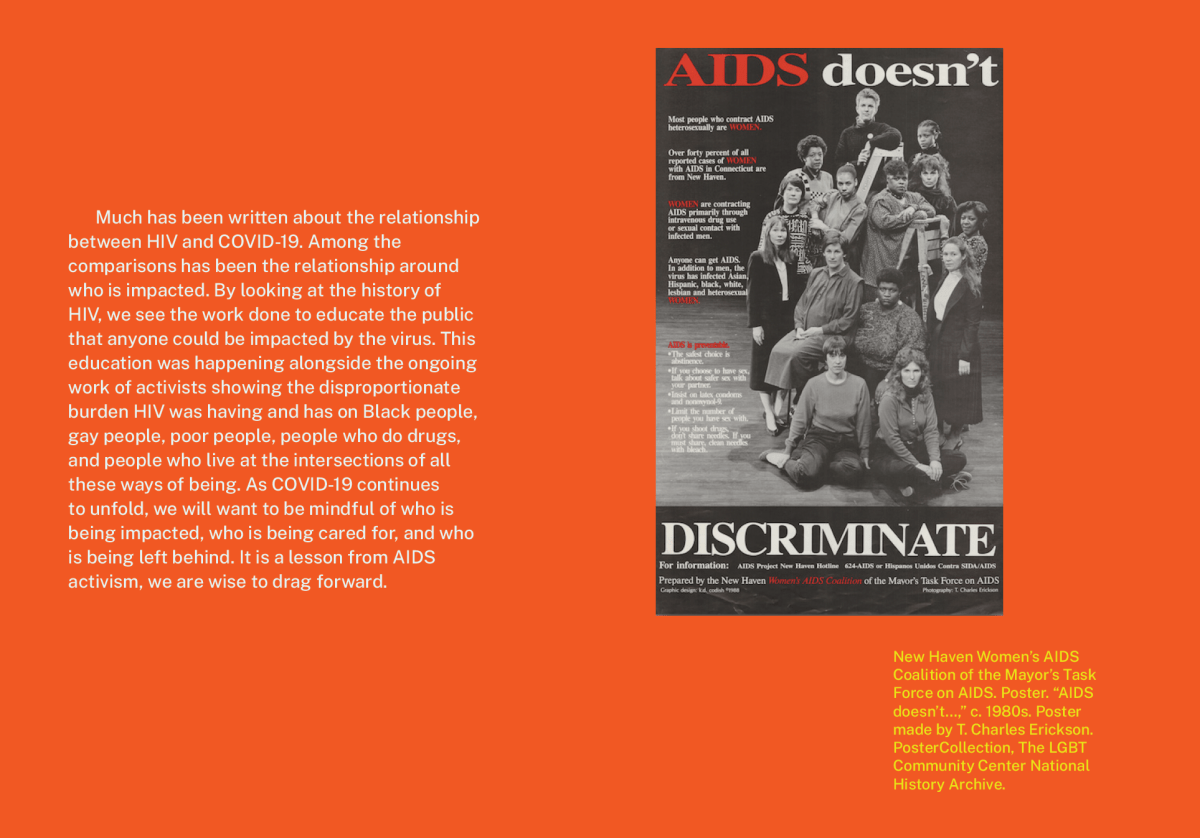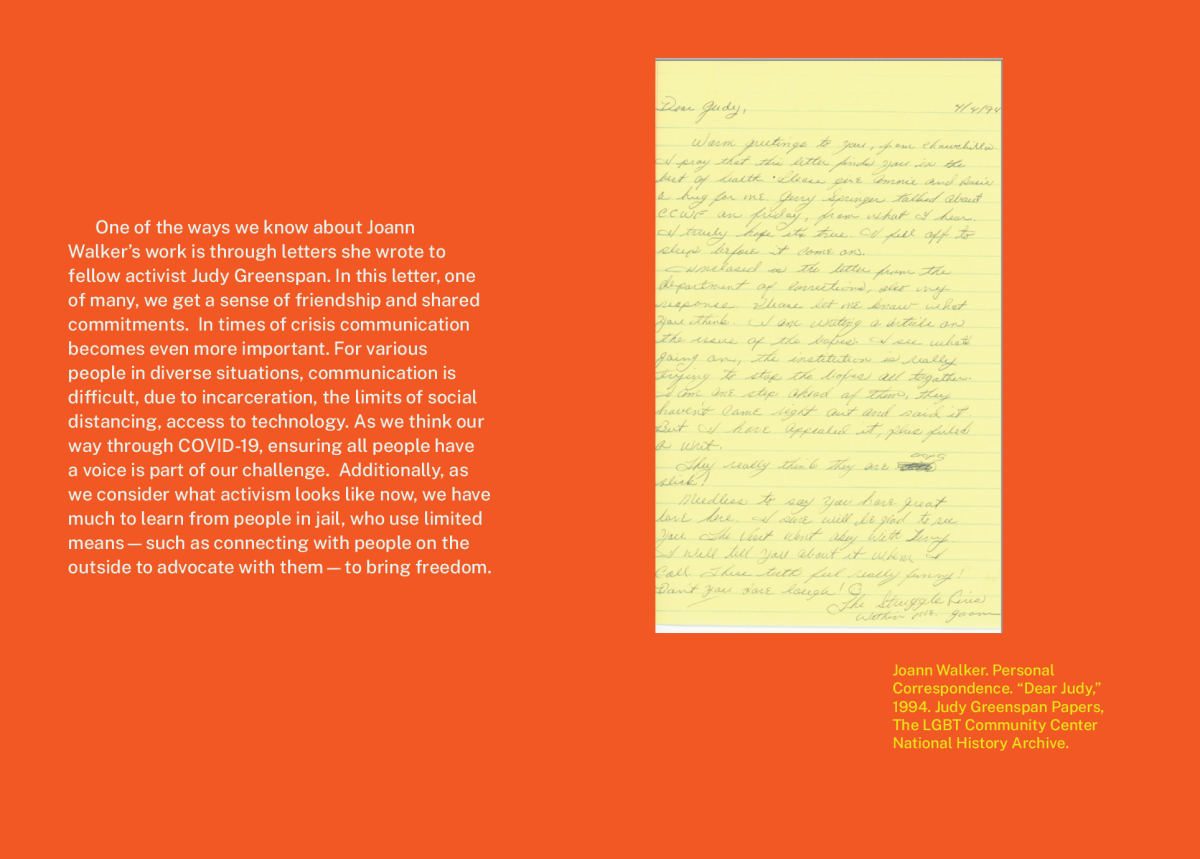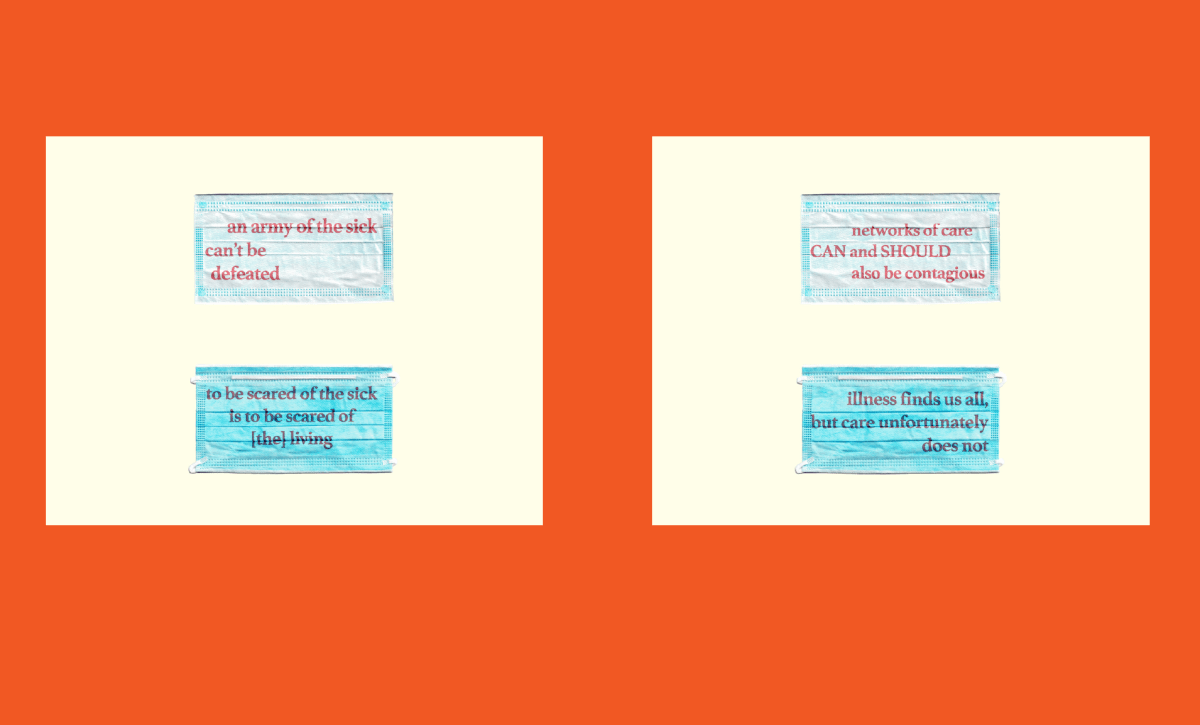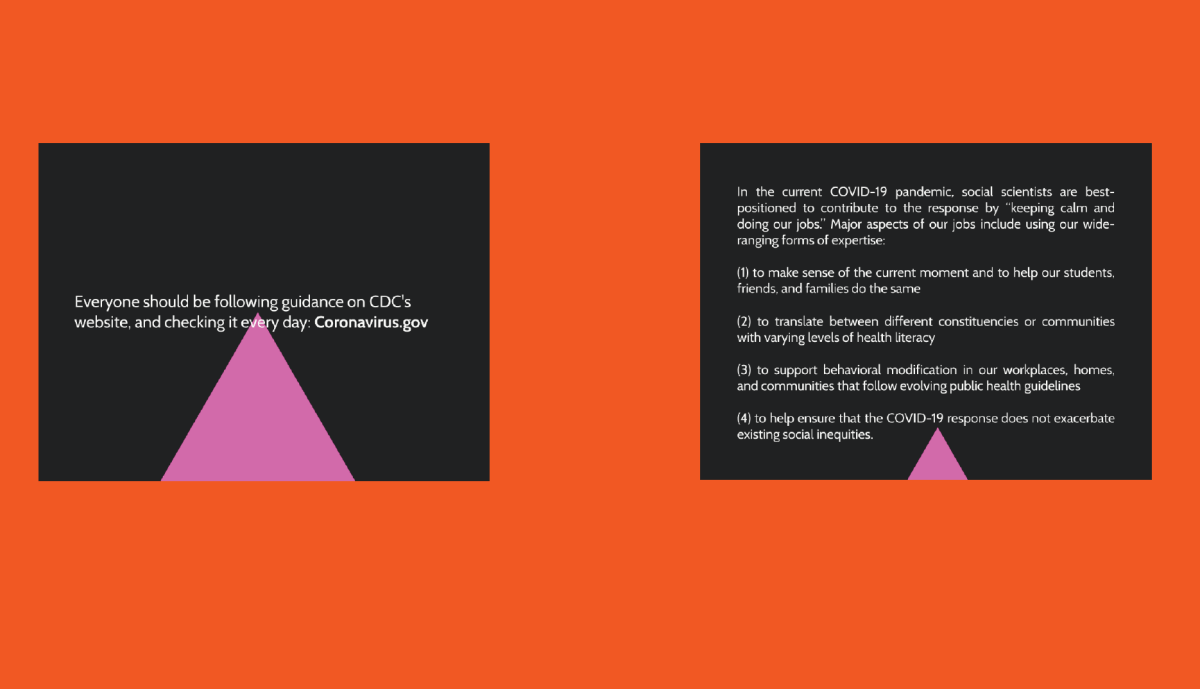This piece is part of a series on Autostraddle exploring the overlaps and divergences between the AIDS epidemic and the COVID-19 pandemic — many AIDS survivors have spoken out meaningfully about both the echoes of their previous experiences in the current moment, and the critical differences between the current pandemic (and the urgency of response) and the previous one and ways in which they can’t be compared. We want to highlight what there is to learn from elders and survivors of the AIDS epidemic, now and always, and to remember that HIV/AIDS and the state’s failure to support those living with it it is an ongoing reality globally, not a distant past.
When I began interviewing older LGBTQ people last fall as a part of my dissertation research, I was very nervous. I study the history of LGBTQ public access TV programming and began interviewing the producers of these shows to learn why people created them, what issues they covered, what challenges they faced, and why the shows ended production. In the process of setting up interviews in person and over the phone, I wondered, would I be able to find common ground across generational differences with my interlocutors? What if my millennial queer terminology annoyed them? What if they said something I disagreed with? What if my recording device didn’t work? What if no one wanted to talk to me at all?
Luckily, my worries were more or less unfounded. Speaking with my interviewees was much more rewarding than I anticipated. I quickly realized that my opportunities to learn from older LGBTQ people have been few and far between. My queer communities have largely been constructed by people my age—I didn’t realize how moving it would be to have open conversations about LGBTQ politics, activism, life, gossip, and art with people a generation or two older than me.
I recently reached back out to two of these people, longtime journalist Ann Northrop and scholar-activist Dr. Alexandra Juhasz, to speak with them about queer community, care, and activism in light of the COVID-19 pandemic. Both longtime AIDS activists, I was curious to hear their thoughts about the similarities and differences between HIV/AIDS and COVID-19. A number of thought-provoking pieces published since March have begun to compare and contrast the two pandemics, but few of these essays have shared the experiences or insights of women in the movement. While gay men have necessary and urgent things to say about the enduring HIV/AIDS epidemic, women have always participated in AIDS activism as allies, friends, family members, organizers, caretakers, as well as people living with HIV and AIDS. I wanted to speak with a couple of these women.
I began both conversations by asking Northrop and Juhasz if they think comparisons between HIV and COVID-19 are useful. “Yes and no,” Northrop replied. While “there are some obvious parallels” between the two viruses, Northrop is more interested in thinking about COVID-19 through “the lens of HIV” rather than directly comparing the two pandemics. That is, she wants to think about how lessons learned by AIDS activists may prove valuable in thinking about the political and social impacts of the coronavirus. Northrop, who worked at ABC and CBS in the 1980s before leaving commercial news to dedicate her life to LGBTQ activism, has co-hosted Gay USA, a weekly public access LGBTQ news program, with journalist Andy Humm since 1996. (You can watch new episodes of their show online every week!) Reporting on COVID-19 has reminded Northrop that “governments will lie to us. Pharmaceutical companies will lie to us.” Despite promises from President Trump, Northrop considers that “we may never have a vaccine, we may never have a cure.” In the face of government ignorance or incompetency, thinking about COVID-19 through the lens of HIV helps show us how communities suffering from illness have to advocate for their own interests, which include access to care, treatment, and research.

Juhasz similarly has mixed feelings about the comparison. “I believe that people are comparing the two of them because they are viral illnesses that are identifiably proximate to trauma and fear and suffering,” she says. She goes on to list a variety of differences between the two pandemics: mortality rates, modes of transmission, and vastly different response times from medical officials, politicians, and the news media. Juhasz, who became involved with AIDS activism in ACT UP in 1987 and quickly became an AIDS activist videomaker, has focused much of her work on the way HIV/AIDS impacts the lives of women. A distinguished professor of film at Brooklyn College and a media maker herself, she writes about documentary media, AIDS activism, black queer and lesbian media, feminist and LGBTQ film, and activist archives and collectives in her work. While HIV and COVID-19 are different viruses that have ignited differed institutional responses, Juhasz thinks pointing out these differences is useful: “they allow us to see what the coronavirus is even as we don’t know that much about it.” Because there is so much unknown about COVID-19, Juhasz thinks that comparing the two can help people cope with feelings of fear and uncertainty: “anything people need to do to try and understand COVID is useful…let’s imagine every resource at our disposal and work with it to the best of our ability.”
I was curious to hear both Juhasz and Northrop talk more about the anxiety, hopelessness, and fear circulating as a result of COVID-19, since the HIV/AIDS epidemic has and continues to cause psychological trauma for the communities it affects. How can we address the emotional impact of the novel coronavirus and how can we care for one another in doing so?
“For me, one of the lasting experiences of my work in the HIV epidemic and specifically with ACT UP was the love that we all felt for each other in working together in helping our friends who had HIV and just being around each other and working together. And now all these years later, whenever I see people who are old ACT UP colleagues of mine, we embrace. We express our love for each other,” Northrop told me. “It is just a deep and lasting feeling of connection and affection.” This sense of community togetherness is more difficult in a moment in which our public health depends on us not being physically present with one another.

Despite social distancing, Northrop still thinks “there is an opportunity for that sense of community to be experienced in helping each other just in daily ways.” She names mutual aid as one important means of reaching out to people in our communities who have immediate financial needs, homeless LGBTQ people in particular. Keeping in contact with friends and loved ones is crucial as well: “I think anything that people can do to establish community in direct or even distant ways is crucially important. I am certainly touched every time I get a message, an email, or a phone call from someone, an old friend, a newer friend, a younger friend…even if you just reach out to one person a day, that is an important way to take care of yourself and to take care of them.” Since Northrop and I spoke, a number of organizations have expanded ways to make long-distance communication possible for the communities they serve–SAGE, for example, a non-profit that provides services to LGBTQ elders, is asking for volunteers to sign up to make weekly check-in phone calls to their elderly members.
Northrop also emphasizes the importance of self-care. “I think we all have to empower ourselves in this situation by making sure our own needs are met first, not in a selfish way that deprives others, but in a way that gives you a little baseline security before you then turn your attention to everybody else.” This includes a wide range of things, including sheltering in place to avoid getting sick, stocking up on food, taking daily walks, and consulting a medical provider if you feel an increased sense of anxiety. “I am a huge believer in symptom relief,” Northrop says. “I immediately focused on dealing with my own anxiety and medicating it, just at a very low level, but enough to take the edge off and make me able to function rather than worrying about having panic attacks every day.” While she does not endorse unhealthy coping mechanisms, particularly because LGBTQ people report high rates of alcoholism and addiction, she believes that coping with anxiety is crucially important to maintaining one’s mental health right now.
Juhasz agrees that social distancing poses a challenge for community connectedness and is interested in the possibility of using digital technologies to breech that distance. “One of the things that I think about lot as a scholar and an activist of AIDS media, but also my current work is really about digital activism, is that mediation technologies like video cameras in ‘80s and ‘90s [and] computers now can be used against distancing and can be used to share the local, affective, experienced reality of impacted bodies and community. And so we should take solace in the ways that media activists have used technology to breach distance.” She names frequent Zoom calls with old friends as one way she’s maintaining her relationships right now. Connecting with our friends online—via Netflix Party, online multiplayer games, coordinated TV watch parties—can help us maintain our relationships. “I think social distancing, it’s necessary for our health to stop the transmission of the virus. But media proximity, it’s an antidote to that. And I think it needs to be hyper-local, extremely specific.”
Local and specific modes of digital connection are important to Juhasz because they can reveal social inequalities that different communities might experience as COVID-19 progresses. “There will be a set of political acts which come from us aggregating local knowledge,” she says. This can be aided by social media: Nextdoor, the neighborhood networking app, has created Help Maps and Groups to identify areas of need and coordinate aid in local communities. Juhasz comparing these sorts of conversations to consciousness raising groups in the second wave feminist movement—she believes that sharing our intimate experiences of COVID-19 can help us understand how systems of oppression are felt in our bodies, and from this we can build systemic analyses to think of ways to make change on a social level. “A politics and an activism of proximity and care seems to me to be as important as anything,” she affirms. Attending to the needs of our communities, even digitally, can lessen the distance we feel from one another. She thinks the needs of healthcare workers, food service professionals, and caregivers are particularly important to attend to right now.

I was finally curious to hear if Northrop or Juhasz have ideas about the tactics we might need to confront COVID-19. AIDS activists have historically used and continue to use a wide variety of strategies to confront the epidemic: political lobbying, fundraising, safer sex education, civil disobedience, street protests, marches, and media and art activism. Might these be effective to stop the spread and address the harm of COVID-19?
Northrop believes we still need in person demonstrations to make collective visual and political statements. “We [ACT UP] held a demonstration called Hands Around The White House. Well, there could be people standing six feet apart, but encircling the White House…that’s the kind of thing that would certainly get a news media attention and force him [President Trump] to, I hope, to do the right thing.” Protests and demonstrations designed to attract news media attention have been a hallmark of ACT UP’s work; Northrop encourages this sort of activism. “If you think drug manufacturers are not moving fast enough, you can go to their headquarters and do the same kind of thing. If you think manufacturing companies are not stepping up, you could do that kind of thing. And all you have to do is get a number of people who are willing to go do that and let the news media know, since they’re certainly looking for stories to cover at this moment related to this. It’s about bringing an issue to public attention in an urgent way. And that’s what ACT UP was all about.” A number of activist organizations have indeed begun to incorporate physical distance into their protest tactics: Never Again Action, a Jewish activist group that protests the U.S.’s anti-immigration policies, recently gathered in cars outside an ICE detention center in New Jersey to demand the release of detained immigrants during COVID-19. In the past month, a group of nurses in suburban Illinois staged a silent protest, wearing masks as they held up signs demanding access to protective equipment. The direct action group Rise and Resist recently created banners incorporating the six foot social distance requirement into the text in order to protest President Trump’s continued lies about the novel coronavirus. Activism during a pandemic needs to be creative—Beautiful Trouble, an activist network, has released a guide to inventive and effective responses to COVID-19.
Northrop has found “inspiration and community” working with the Reclaim Pride Coalition, a group that organized an alternative Pride March in New York last year to oppose the corporatization of Pride. To address COVID-19, Northrop shares that Reclaim pride is “working with dozens of other groups in a mutual aid project to help the most marginalized in our communities (like trans people being released from jail with no place to go and no resources).” Reclaim Pride has also protested the extremist bigot Franklin Graham and his organization the Samaritan’s Purse, which established a medical facility in Central Park to treat coronavirus patients. “We know he uses them mostly as a fundraising vehicle to help continue to spread his anti-LGBTQ, anti-Muslim views. So we formed a Working Group, met frequently in Zoom calls, figured out our agenda and held public press conferences to challenge the Mayor, the Governor and Mt. Sinai Hospital to sever their relationship with Graham. We garnered a lot of public support, got a lot of information leaked by medical workers at the hospital, who were also outraged, and got a lot of publicity when the NYPD tried to bust up one of our press conferences.” Northrop describes this activism as very meaningful to her in the midst of an isolating time: “Through it all, we have shared our anger, our sorrow and our joy at driving out Graham. It has built community among us and it has kept us busy and gratified at a time when we might otherwise be sitting at home, isolated and feeling useless. Action=Life.”
Northrop does want to note that ACT UP did not invent civil disobedience or direct action: “A lot of AIDS activism was built on the backs and shoulders of the women’s movement, the anti-Vietnam war movement, the civil rights movement. All these movements pass along this experience and these tactics and we all owe a debt of gratitude to each other as we go along.” Historical activist movements provide us with a vast resource that we can and should continue to pull from as we address COVD-19.
When I ask Juhasz about the tactics of AIDS activists in the 1980s and 1990s, she immediately wants to remind me that “AIDS is not over and AIDS is not a thing of the past.” The AIDS crisis is often framed as a historical event, especially since the invention and widespread use of antiretroviral medications, which made HIV into a more manageable illness, at least for those with access to ongoing and affordable medical care. But Juhasz affirms, “It’s a huge ongoing pandemic.” And she’s right: in the U.S., 50% of gay and bisexual Black men are projected to become HIV positive in their lifetime. Worldwide, hundreds of thousands of people per year still die as a result of HIV/AIDS. To frame the HIV/AIDS epidemic as “over” or “in the past” is to ignore the ongoing needs of marginalized communities around the world.
AIDS activism is not over either. In recent years a number of narrative films, documentaries, books, and art exhibits have memorialized AIDS activism and the work of ACT UP in particular. Juhasz and her frequent collaborator Theodore Kerr call this period “the AIDS crisis revisitation.” “There’s a lot of attention paid to AIDS right now and it’s very exciting,” she explains, “but all of it is backward focused and most of it focuses on the experience, suffering and conquest of gay white men…that has to be connected, made more complicated, made richer and more full by the other experiences and other analyses.” This would include the experiences and analyses of black men, lesbians, trans people, drug users, straight women of color, and sex workers. “When we want to think about how disease and illness function in a society, we need to be very expansive and inclusive,” Juhasz affirms. “What we learned in relationship to HIV/AIDS and continue to learn in relation to HIV/AIDS is that the systemic injustices of racism of homophobia, sexism, transphobia, affect people’s health, their sense of entitlement and agency, how they can move in the world in ways that then are exasperated by illness.” Her latest book, AIDS and the Distribution of Crises (which you can read for free on the Duke University website through June 30th) takes up this work. “This [the COVID-19 pandemic) also will end up being a story about racism and poverty because all crises are,” Juhasz says. The rapid spread of COVID-19 in jails and prisons across the U.S., as well as the disproportionate number of deaths in Black and Latinx communities, have already shown how the impact novel coronavirus reflects enduring structural racial and economic inequalities.

Juhasz thinks it may be too early to tell as to what kinds of specific activist strategies will be needed to combat COVID-19–“it’s happening in real time.” One thing she’s continually drawn to, however, is collective artwork. “I’m very much about making art together as a response to anything bad. I highly recommend that as a way to care for each other,” she says. Making art is about “self-representing our own experiences and being in community.” For example, Juhasz holds Fake News Poetry Workshops to help produce human connection as a response to the way social media can distort our sense of self and community. She argues that writing poetry collectively about our lived experiences online helps create “cyberfeminist methods of accountability, collaboration, collectivity, and care.”
In the spirit of collective artwork, Juhasz recently helped put together a zine called What Does a Covid-19 Doula Do? The zine is connected to an exhibit she co-curated for the ONE Archives Foundation about AIDS archives and activism and was created in collaboration with the What Would an HIV Doula Do? collective, which Juhasz is a part of. She explains, “Doulas help people through transitions in their lives by creating space for questions and care. We think about AIDS as a series of transitions across a life, whether one is HIV positive or not. Now, COVID is too.” In the zine, collective members responded to the prompt “what would a COVID-19 doula do?” with a series of short essays and images, combining archival material with reflections on the present. It’s one among a number other “quaranzines” that experiment with different formats for sharing art and activism about the novel coronavirus. The What Does a COVID-19 Doula Do? zine explores all of the ways we support and care for each other during a pandemic, “the everyday work so many of us do to keep our friends surviving and thriving.” Connecting to the self and others through art is a crucial way we can maintain a sense of shared humanity. Through its many pieces, the zine shows how “art, activism, community-making, and care allow us access to the dignity of our own voice and knowledge.”
Juhasz firmly believes, “We all have this human need to make things together. It’s called art. It’s a very productive and generous thing to do with your time and energy. And particularly in a situation where people are feeling fear or anxiety or grief or sorrow, art tends to be a place where we seek but also can tell and share.” At first I hesitate when she brings this up– what if you’re not an artist? What if you don’t have any particular creative skill? “It doesn’t matter if it’s good or not,” Juhasz affirms. “The process of the making is the place where you’re most human, where you are most alive. It’s where you are sharing and generous. It’s where you’re proximate with other people. And I think that would be great if we were doing some of that together.”
Access the entire What Does a COVID Doula Do? zine here:



This is excellent. Thank you so much!
Thank you for sharing this. I do like the idea of people standing 6ft apart surrounding the white house.
Thank you for this! I’m excited to read the zine linked at the bottom!
*I found that the text within the orange images is incredibly difficult to read. I know changing it might not be possible, but perhaps writing out what is written in a caption would be very helpful.
Thank you so much for this article and for bringing the Zine to my attention!
My mom is a medical worker and when COVID-19 was first ramping up she talked a lot about how it felt quite similar to being a medical worker during the aids crisis, especially before anyone really knew anything. Suddenly there was this wild rush for more PPE and peoples prejudices were amplified/ made more visible